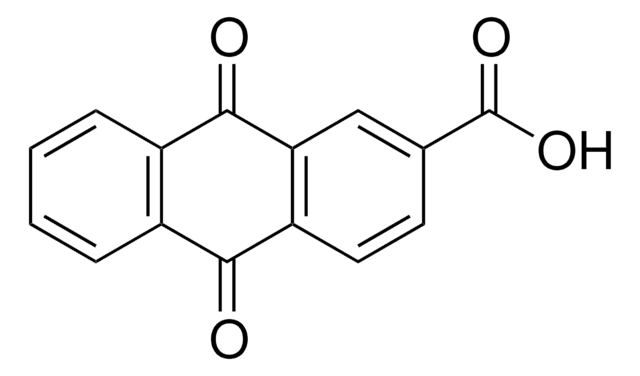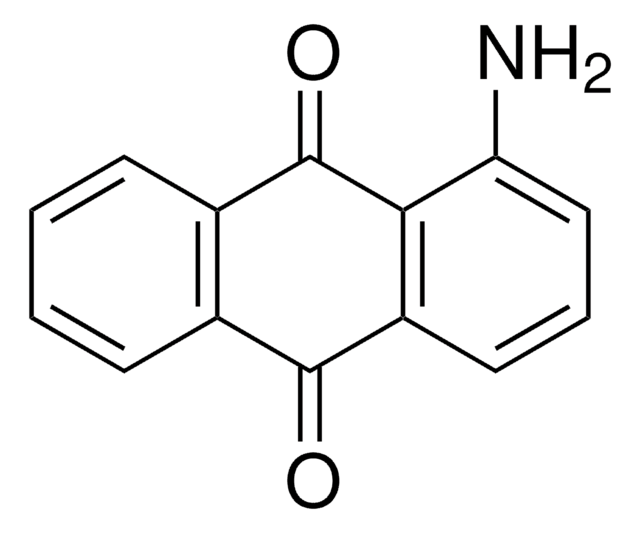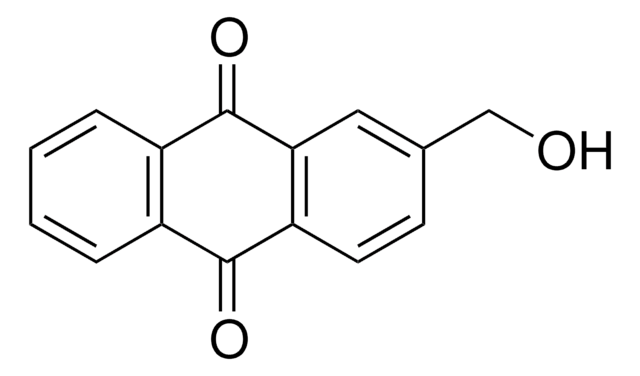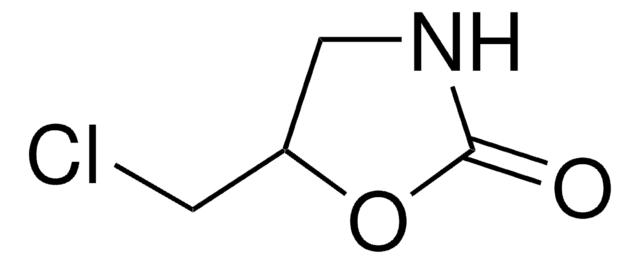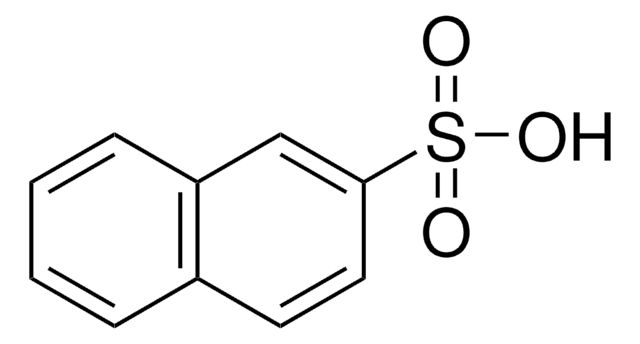추천 제품
분석
98%
양식
solid
mp
166-169 °C (lit.)
작용기
chloro
ketone
SMILES string
ClCc1ccc2C(=O)c3ccccc3C(=O)c2c1
InChI
1S/C15H9ClO2/c16-8-9-5-6-12-13(7-9)15(18)11-4-2-1-3-10(11)14(12)17/h1-7H,8H2
InChI key
NVUYDKYMEMGYFP-UHFFFAOYSA-N
유사한 제품을 찾으십니까? 방문 제품 비교 안내
일반 설명
2-(Chloromethyl)anthraquinone is an anthraquinone derivative. It was utilized as a substrate to synthesize Cibanone yellow R, a vat dye. Its electrochemical behavior has been studied over a wide pH range.
애플리케이션
2-(Chloromethyl)anthraquinone may be used in the following processes:
- Synthesis of 2-[methylamino-N-(1′-methyl-4′-N,N-diethylaminobutyl)]anthraquinone diphosphate.
- Synthesis of 2-(3,4-dicyano-phenyl)-2-(9,10-dioxo-9,10-dihydroantracen-2-yl-methyl)-malonic acid diethyl ester, starting reagent for the synthesis of tetra substituted metallophthalocyanines.
- To alter the glassy carbon (GC) electrode surface in order to investigate the oxygen reduction reaction (ORR) in alkaline medium.
신호어
Danger
유해 및 위험 성명서
Hazard Classifications
Skin Corr. 1B
Storage Class Code
8A - Combustible corrosive hazardous materials
WGK
WGK 3
Flash Point (°F)
Not applicable
Flash Point (°C)
Not applicable
개인 보호 장비
Eyeshields, Faceshields, Gloves, type P3 (EN 143) respirator cartridges
Electrocatalysis of oxygen reduction on glassy carbon electrodes modified with anthraquinone moieties.
Mooste M, et al.
Journal of Solid State Electrochemistry, 18(6), 1725-1733 (2014)
Synthesis, electrochemistry, spectroelectrochemistry and electrocolorimetry of phthalocyanine-anthraquinone hybrids.
Sezer B, et al.
Synt. Metals, 160(19), 2155-2166 (2010)
Sulphur dyes and sulphurised vat dyes.
Shah KH, et al.
Proceedings of the Indian Academy of Sciences - Section A, 30(1) (1949)
Electrochemical investigations of unexplored anthraquinones and their DNA binding.
Shah A, et al.
Journal of Electrochemical Science and Engineering, 3(1), 19-27 (2013)
Kevin K Schrader et al.
Applied and environmental microbiology, 69(9), 5319-5327 (2003-09-06)
Musty "off-flavor" in pond-cultured channel catfish (Ictalurus punctatus) costs the catfish production industry in the United States at least 30 million US dollars annually. The cyanobacterium Oscillatoria perornata (Skuja) is credited with being the major cause of musty off-flavor in
자사의 과학자팀은 생명 과학, 재료 과학, 화학 합성, 크로마토그래피, 분석 및 기타 많은 영역을 포함한 모든 과학 분야에 경험이 있습니다..
고객지원팀으로 연락바랍니다.

